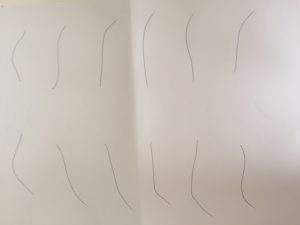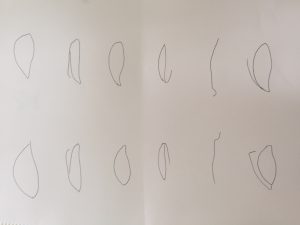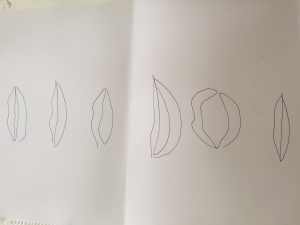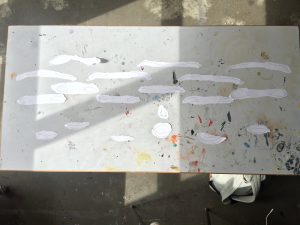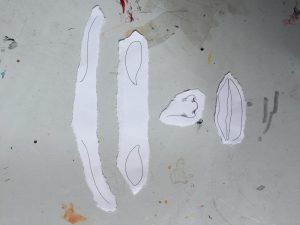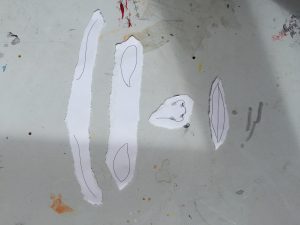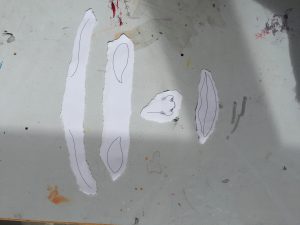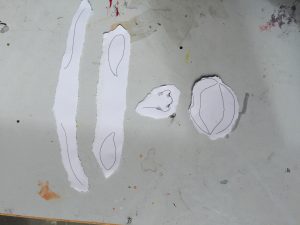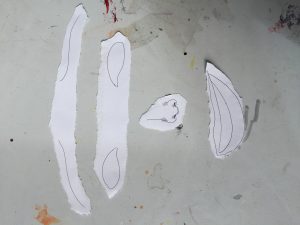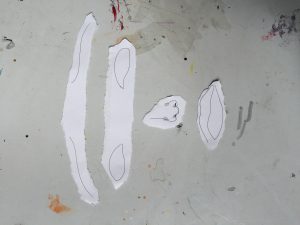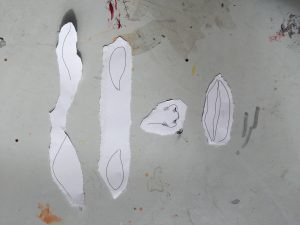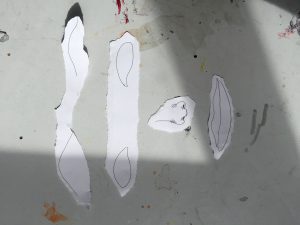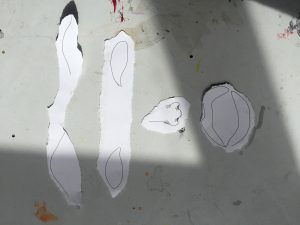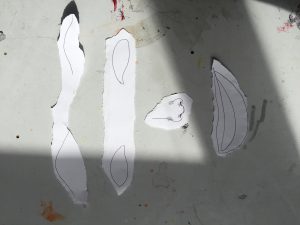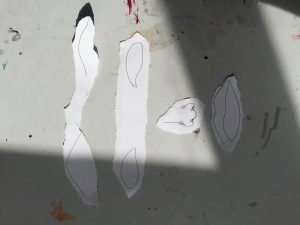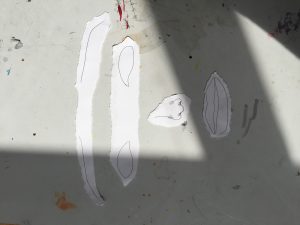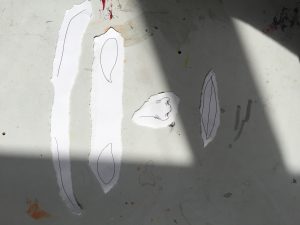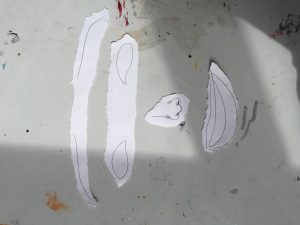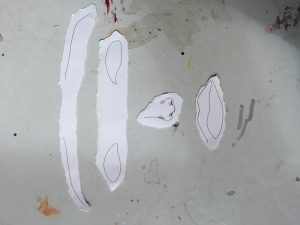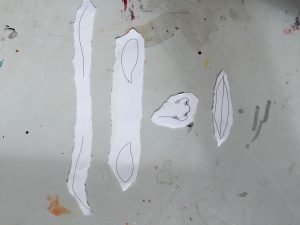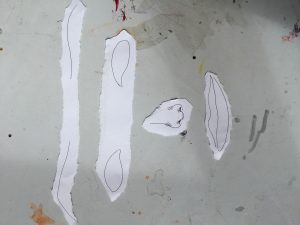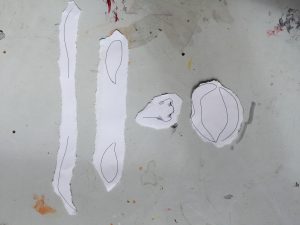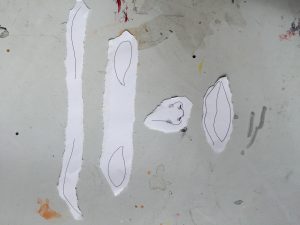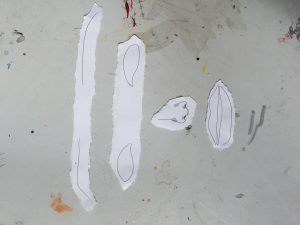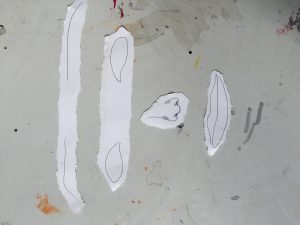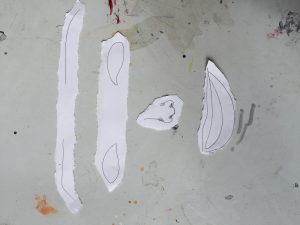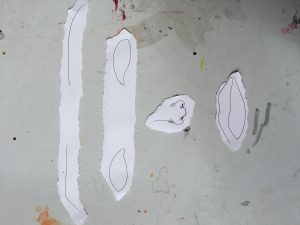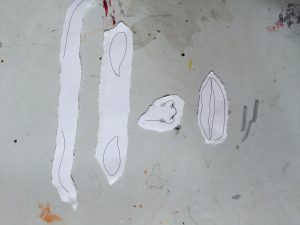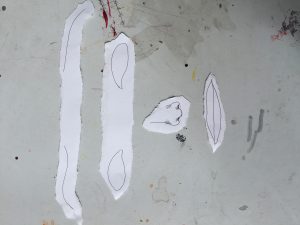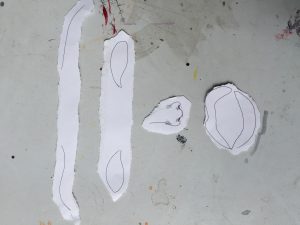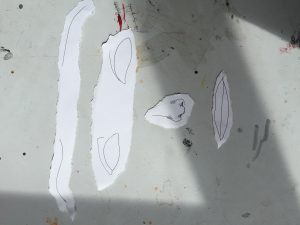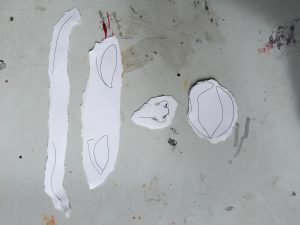Continuing on from the previous experiment, I decided I wanted to break these expressions down even further, to find out if they could still be correctly interpreted in even more simplistic and removed forms, so I created even more simplistic forms out of the simplified versions of the previous drawings.
On the surface, these are just three different emotion displaying parts of the face displaying six basic emotions, but when I looked at the forms, I realised that, when mixed and matched, they could display almost every single emotion, or mix of emotions, the human face can perform. So I further removed the shapes from their context by ripping them off the page and adding a nose (I recognise this wasn’t necessary, but I thought it made the faces a bit easier to interpret).
In this one picture are all of the emotions that a human face can portray, it holds the potential to be read and misread, and it is what it is in its most simple form. The basics of the performance of emotions, at least ones read off of faces. A set of eyebrows, a pair of eyes, a nose, and lips.
I continued playing around with these staples of human emotion, laying them out on the table and playing around with them like a puzzle. If I had the chance to set this up in a gallery, I would lay them out like so, and have the audience interact with them, making new expressions and interpreting ones others made.
A couple of “puzzle” examples for fun:
